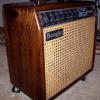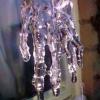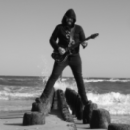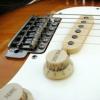Leaderboard
Popular Content
Showing content with the highest reputation since 12/21/2025 in all areas
-
Sharing this because I went crazy trying to figure it out, and maybe it’ll save someone else some time. A few days ago, I tried logging into Line 6 Helix Stadium, but the QR code never appeared. The manual login didn’t work either. To make things worse, the HX Stadium App kept crashing, and I couldn’t update it from my computer or through Line 6 Central. Ironically, those were the two options the manufacturer recommended when I contacted support. Since I work in tech, something didn’t add up. Everything pointed to the app not connecting to the server, which explained why the QR wouldn’t generate. Then I thought: “What if it’s the time zone?” I tried something simple: Disabled automatic time synchronization Set the time manually And… BOOM! The QR popped up instantly, and I was able to log in without any issues. Hope this helps someone out there.5 points
-
I will be taking a two week hiatus from music starting this week. Hope you all have a great Christmas and a fun filled entrance into 2026. This will be the first year I did not applied for any music jobs during the end of year and first of year since 1967. My present to my family and myself is to be present this whole period. If I do not appear active for the next few weeks I am not being rude. Maybe you all and the Line 6 staff you may read this have a wonderful time this season! jpd4 points
-
If you are on Windows, please look in Device Manager and let us know if you see 'Helix Stadium Bulk Transfer' listed under 'Other Devices.' You may see a blue question mark inside a white circle associated with it. That means the Line 6's Windows USB driver didn't load which will explain the Stadium app crashing every time you attempt to connect to the Stadium XL. I have a support ticket submitted for this. For me personally, it is a moot issue at this point since I decided to order a MacBook Air to work around the issue.3 points
-
Just received the THON (Thomann) case for my Stadium. I love their cases - have been using one for many years. Built like a tank AND cheaper than the backpack :). It can be operated from inside the lid. It has room in front (where the vents are) and the unit sits suspended by foam sides about 2 cm in the air, so there is plenty of room for heat dissipation underneath. There is also room behind the unit, for the power cable.3 points
-
please check to see if you have it set (global settings) to automatically assign the block to a footswitch. If this is set to manual, then adding a wah or volume will not work correctly until you make their assignments manually. easiest fix is to delete them, turn on the automatic add and add them again. Hope that helps.3 points
-
Yes. In your Stomp XL preset use separate amp and cab models (not an integrated amp+cab) and place a SEND block between the amp and cab blocks in the signal chain. Connect the SEND output to the amp’s cab input. Connect the main outputs to FOH. Make sure the output and input levels match. You can position any FX blocks before or after the SEND block depending on whether you want them to be heard in your onstage cab or not.3 points
-
Yes. That’s what I did: backup factory reset restore backup delete songs reimport kind of a pain but it’s still working for me!3 points
-
Great discussion. Being able to recall songs via midi (with an associated Preset) will be critical for me (and I suspect others). I may delay purchasing the Stadium until I know this feature has been added. In my small acoustic duo, I use OnSong on an iPad to send PC changes to my devices (BeatBuddy, HX Stomp, and Rc500 looper (backing tracks)) for each/every song. I then use a Morningstar MC8 to control these devices while performing the song. My intent is/was for the Stadium to replace the HX Stomp, RC500, and Morningstar (smaller footprint and less complexity). I go into every gig with a pre-built setlist (in OnSong), but invariably every show is different and we make changes on-the-fly depending on the vibe in the room, audience requests, etc. In those situations, all I need to do is select the song in OnSong, and it loads the beats and/or backing tracks and presets across all my devices - no menu diving, no tap dancing. I get that I could build Setlists (presets) or Playlists (songs) in Stadium, but those don't seem to easily allow for flexibility when ad-hoc set list changes are taking place. The internal Set Lists/Play Lists probably will work fine for larger shows with pre-defined lists that won't likely change. For smaller acts, we're going to need flexibility to call up songs (with associated presets) in a much more flexible manner. Showcase has such promise to help smaller acts add new elements to their shows and I hope Line6 can incorporate features that meet the needs of both large and small acts/performers.3 points
-
I spent a lot of time going through the settings the Tone War guy suggested for all the metal amps and got those where they sounded great. I came across this by accident looking for different blocks to try...At the very end of your final chain get a stereo model of the Bass DI (located in the Dist section) put the Bass and Treb at 4-5 and the level to suit, this will give your preset a full rich low end def and sparkle presence no EQ or Comp can do. Try it you will be adding it to your presets asap. I have no idea what it was intended for but man it fixes the punch and feel of the real amp that is missing.3 points
-
This biggest point here is this: Line 6 asked the community if they would be willing to wait or get it earlier - most said they could ride it out and get the updates as the bugs were worked out . . . it sounded like most wanted the unit sooner rather than later (I know I did). Since I'm not using it to gig with at this time, I'll push thru the problems for now. Syphus2 points
-
Check the forum for similar topics. Build your presets so that every preset is the same loudness as a blank "New Preset" (nothing in the chain). Your presets are too loud if you are saying factory presets are too low in volume. Set the output volume to mic level, fixed volume for the XLRs. Volume knob should not be able to adjust this signal, it needs to stay the same throughout the show. This is your FOH signal. Set the volume knob to only operate the 1/4" out. This is your monitor mix for an onstage amp, Headrush FRFR, etc, set that to line level. It doesn't really matter what that is set to, since it's just for monitoring your sound, but you also don't want to overdrive the monitor/amp too much. Use mixing monitors to dial in your sound. FRFR is not good for that, it's bass heavy. Put FRFR on a stand, never leave it on the floor if you want to have more of an unbiased sound, still mixing monitors are better. Do not use Global EQ to achieve your "signature sound". Instead use an EQ in the preset itself, change the tone settings of the amp, etc. Never apply Global EQ to what you send to what goes to FOH -- sound guys can eq your sound themselves. Only have Global EQ apply to the stage monitor and only when it's needed. Your presets need to be dialed in so they are all uniform, and equalized the same and without any issues. Use the same virtual amp in all your presets to avoid having the sound guy having to constantly correct the mix because you decided to use different amps for every song. Use Global EQ when the stage gets too boomy, etc to compensate, as a last resort. Sometimes this can happen. Or if you are playing at a small club the onstage sound may ruin the mix, so the sound guy may ask you to make an adjustment. To check for clipping, the green meter on the output block indicates a healthy signal level, showing you're within normal operating range without clipping. So put the cursor on that output block and see if you are sending the signal too hot. But again, if you follow the first step, you should not have that problem. A lot of people dime their presets and they become extremely brittle and harsh sounding. I've seen that in almost every free preset I've downloaded that Line 6 users shared.2 points
-
1) Besides the input impedance there is an input gate in the input block. Disable it when you compare the effect of rolling back the guitar's volume pot. 2) If you want unity gain in your 4CM patch (which means the amp's input receives the same level that it would get without HX in the chain) set Input Level, Send/Return and Output Level to INST in Global Settings > Ins/Outs. Use default FX loop block settings in your 4CM patch and crank the VOLUME knob. 3) Here is how you A/B test the actual impact of the HX Stomp to the sound of your amp: HX Stomp has an analog bypass (aka true bypass) that you can use to compare the impact that the HX has when switched in. To do this right you need to do the following steps: create an empty patch double check that the input block and output block settings are default settings set Input Level and Output Level to INST in Global Settings > Ins/Outs set Global Settings > Preferences > Bypass Type to Analog set Global Settings > Preferences > Tap Function to AllBypass crank the (physical) VOLUME knob use a short cable between HX Out and the amp's input Now you can compare the actual impact of the HX Stomp to the sound of your amp toggeling between Analog Bypass and the empty patch using the Tap footswitch in Stomp Mode. 4) HAVE FUN!2 points
-
All amps don't "clean up" the same. That phenomenon is a result of the interaction between the guitar's pickups and the amp's input circuitry. While the Helix amps are very well modeled, in the end they are not really tubes. All that said, my guitars, single coils to JBs to high output ceramics, all "clean up" just fine with the Helix amps I use. The INPUT circuitry of most REAL WORLD amps is 1MegOhm impedance. Certain FX placed between the guitar and an amp's input (see below) are lower than that and in order to get "authentic" sound from the modeled FX Helix uses analog circuitry to mimic that interaction with the pickups. First thing to do is to check GLOBAL SETTINGS>PREFERENCES>AUTO IN-Z. When set to ENABLED Helix uses that analog circuitry to mimic the interaction between your pickups and that type of effect, using the first ACTIVE effect in the signal chain as a reference. When set to FIRST it uses the FIRST effect, active OR bypassed. Since MOST of the FX in Helix are 1M input impedance, the ENABLED/AUTO settings will normally be fine. If you ALWAYS want your pickups to act like you're plugged straight into an amp (you don't use those FX), then on the INPUT BLOCK of each preset set the IN-Z to "1M Ohm". This overrides the GLOBAL IN-Z setting and is as close as Helix gets to that (plugged straight into an amp) behavior. There's a spreadsheet online somewhere that has all of the Helix FX impedance info, but I can't find it just now. Here's a partial list distilled from that SS. Thanks to @John Mark Painter on TGP. The post is from 2020, so you might want to do a search for the actual spreadsheet which was updated to v3.80: All Dynamics are 1M All Reverbs are 1M All Pitch are 1M All Filters are 1M Wah with Impedance Changes Weeper 90k Teardrop 90k UK 136k Delays with Impedance changes Analog Echo 230k Elephant Man 90k Analog w/Mod 90k MultiHead 22k Cosmos 10k Modulations with Impedance changes 70's Chorus 22k Analog Chorus 22k Courtesan 136 Vibe Rotary 90k Dual Phaser 230k U-Vibe 90k Distortion with Impedance Changes BIGHORN (Tested manually...check for yourself and confirm) 70k? Deranged Master 22-32k Colordrive 136k Triangle Fuzz 22k Fuzz Pi 22k Arbitrator 10k Facial Fuzz 22k Buzz Saw 230k Tychoctavia 230k Octave Fuzz 230k Jumbo Fuzz 90k Industrial Fuzz 10k Hedgehog 230k Scream 808 230k Scream 230k2 points
-
I spent most of my career in technical training and education in the private sector (i.e. a business, not a publicly funded institution). Prepare for a potential short term expression of ‘need’ (desire, actually), followed by a deafening silence once the actual cost per student for business viability is known. But please, everyone, surprise me! Indicate in your expression of need how much you would be willing to pay per hour of learning.2 points
-
he is in Stomp A mode... he used Control Center to assign the snapshots to the five FS's on the bottom row.2 points
-
Not with the looper flags, those should not involve midi. The use of the midi flags is my workaround for the issue. They work better than the dedicated looper flags.2 points
-
2 points
-
In Stomp Mode you can program each footswitch. Use Command Center to set up the footswitches to recall the snapshots you need.2 points
-
Here’s the only difference I did which has worked for me. Hope it works for you too. Delete songs (maintenance menu) backup (maintenance menu) factory reset (maintenance menu) restore backup (maintenance menu) reimport (Stadium App)2 points
-
I have rebooted the stadium after this happened. I can recreate the issue with my presets as well just by booting it up and then switching between specific presets I have. No sound coming from the unit and matrix mixer shows sound graph (the green leds that would usually show a signal) but they are all at the same half way level with no sound coming out and not input from the guitar. If I reboot, everything comes back and I get normal sound again and normal input readings. I then play for a little bit, and then swtich presets and it happens again over and over again. I am opening a support ticket as well but was wondering if anyone else has had issues with this one? It's a pretty bad bug and makes me nervous about playing this live right now.2 points
-
I have logged this issue and am currently working with Line 6 support. So far, they have confirmed that there are some known issues when exporting presets to Stadium. I have found that creating a preset exclusively on the Stadium and not using the Stadium App has not produced the issues that I have seen on the Stadium App, including this one. I have successfully created two inline cabinets (both using File files), and have been able to use Snapshots to change the IR files with no problem on the Stadium (I don't believe that this can be done reliably in the Stadium App until they resolve the Cabinet/Snapshot issues we are seeing.2 points
-
Agreed with you all. I am still trying to figure out how the preset management is better now in the Stadium over the Helix. I assume that it would have something to do with Showcase and saving songs. But for now, it is just confusing to me. But what I DO understand is that I have half of the preset storage capacity on the Stadium as opposed to the Helix. I know that I might be able to use multiple SD cards. And 512 presets is still more than enough for any particular show. Still, I found myself swapping out Set lists on the Helix pretty regularly for Preset Development, Play-Along Set Lists, Sunday Set Setlists, Christmas, Top 100 songs, Bass Guitar Set lists, recording, etc. But this only allowed me to at least always have a backup of a set list that I needed to offload in order to create a new one or bring another one in. Remember, we could have 8 Setlists of 128 songs! So far, I have had to reset my Stadium back to Factory several times due to buggy issues and that has only made preset management MORE problematic trying NOT to lose presets that I had created so far (which is not very many yet, either. Remember to ALWAYS SAVE (like the early days of Windows!)2 points
-
I think we’re going to see improvements in how setlists are implemented in a future firmware update (but I have no basis for that expectation; purely speculation). The idea of using aliases with a single copy of a USER preset is a good one, imho, but the current implementation is a bit confusing to me. Like you, I also see no point in having a setlist file on my computer that has nothing but aliases. I also don’t understand the frequent appearance of a numbered suffix. e.g. (1) behind a USER preset’s name when importing setlists.2 points
-
I submitted all this to the product feedback. My set lists are per band as well. So I see what you're saying but I don't see it being a problem at least for my personal scenario. Especially as I won't be using showcase at all. the SD card thing just seems like a lot of hoops to jump through. I'm currently still of the opinion that the old Helix way of doing things was actually better, but I'm trying to adapt to the new way to make sure it's not just a case of "familiarity" vs. "new." It used to be so simple and easy to just swap in/out setlists which also included the presets.2 points
-
I built this satellite board for use with my Stadium XL with a space for the future Expand D-10 I guessed the size of the D10 box by scaling to the size of the known ethercon connector in one of the pix. If anyone at Line 6 knows, here are some questions… 1. what are the actual dimensions of the D-10? (found this on Thomann Dimensions: 40.6 x 138 x 99.7 mm) 2. is the D-10 phantom powered by the Stadium Nexus port or by the USB-C port? 3. what is the current draw of the D-10? thanks! Joe2 points
-
@rwanderingThanks for the info… I am guessing that you are right that the D10 will receive power from the Stadium XL. Also, I found the D10 dimensions on the Thomann website - Expand D10 dimensions: 40.6 x 138 x 99.7 mm2 points
-
Just compared the file contents of the original (problematic) file with the second one I recreated from scratch and noticed that the snapshot settings for all of the blocks is populated with null after the first three Snapshots (which work correctly), instead of true or false as opposed to the Preset that is working properly. I did create the preset with the Stadium App (as that is still my preferred method) so I can not report whether it was the App or Stadium XL that created the problem. But once the preset is created with these null values then I think that it can not be corrected unless you edit the file (perilous and error-prone at best) or just re-create the Preset from scratch as @bverdon suggested. Either way, it is definitely a bug. For further clarification: Original (problematic) Preset: the "snapshots" element is each block records "false, false, false, null, null, null, null, null" The re-created Preset: the "snapshots" element is each block records "false, false, false, true, false, false, false, false" I typically expect true/false to be binary unless there is another purpose being used for the value. This would lead me to believe that those blocks are not being set properly and may either be turned on or off depending on the last snapshot loaded (or another internal array).2 points
-
Yes, there is an editor that runs on Mac. The program/app is called Stadium.2 points
-
If you know of any easy ways to view all of the Block assignments at a glance, then put them here. You could easily view all of the block "BYPASS/CONTROLLER ASSIGN"ments in the HX Edit App as there was a panel devoted to it. I could easily see all 23 (just kidding, 2 or 3) blocks that might be assigned to a footswitch. I hope that they include that in the Stadium eventually.2 points
-
In the Stadium Global Settings -> Ins/Outs set the XLR Out Level to Line. The default setting is Mic which explains why that’s what you’re getting.2 points
-
The issue was confirmed and reproduced by line 6 support. fingers crossed!2 points
-
That's a known bug. Will be fixed in a future firmware release. You should open a support ticket to report it anyway.2 points
-
Nevermind, I figured it our. After selecting a set list via the touchscreen, you also need to actually load a preset from that setlist. Once you do that all the scribble strips update to reflect the setlist. I thought I just needed to select the setlist name and the scribble strips would update.2 points
-
This has bee posted before. In summary: 1. when building presets, make sure your overall volume for a blank preset is around the same as the actual preset you are creating to avoid clipping. 2. set up XLR volume to be Mic level and disable the volume knob, so it's fixed. This will go to the FOH and will never change the level, because you don't want to confuse the sound guy by having different volume levels. 3. use the volume knob to only control 1/4" out which is your monitor mix, or in my case which is going to a power amp (Mooer Baby Bomb) into a 12" speaker cab.2 points
-
Hey, I just dropped a pack of 5 free Line 6 Helix presets, and wanted to share it here. They’re a mixed bag: a couple of dirtier, aggressive tones, a few atmospheric patches built around delay and reverb, and some in-between textures that ended up sounding way better than they had any right to. And hey… free is a fair price. If you want to check them out, you can find audio previews in the link. Let me know what you think! https://www.noiseharmony.com/post/line-6-helix-free-presets2 points
-
I do the same since I had problems with an ISP router being picky about what it would allow on the network.1 point
-
Dani197819, What I am reading in this thread sounds like a "Yamaha/Line6 University" and or "Helix Stadium University" request. silverhead is correct in that, so far, this is out of the realm of Yamaha/Line 6 wheelhouse. Many years ago this forum (I remember the first Mesa Boogie forum) and others began evolving into a community of fellow musicians sharing their tips and tricks that has evolved into a great KB sharing community for musicians. Having said that, while the truth (information) is out there (forgive me X files), with all the many various YouTube creators tips & tricks AND how-to videos to date for just about everything they have learned and how to use the many levels of the product, modeling itself as well as what Helix has done and may well be being done by other manufacturers has evolved and is evolving into a platform of many disciplines. In the OG Helix and the Stadium forums I've seen basic how to(s) for getting the amp to be adjusted for what the end user want to hear. I've seen threads on using 3rd party devices for level normalizing and checking. I've seen some recording suggestions tips and tricks. I've even read discussions on the frequency curves for amplifier speakers for hi and low cuts to get as authentic a sound as possible from modelers. I agree we have come into the "as simple and as complex" world for modeling devices as we want to get. I am wondering if the real challenge is that a University type of teaching platform would require every thing the Helix Stadium can do to be broken down into many levels to include but not be limited to routing for one, midi for one, preset leveling, multipath creation, even sound recording for stem extraction and tracking (Showcase), etc. I know that there are musicians saying the OG Helix is all the need right now and others using the Stadium very happy with the new current and upcoming improvements for the "stage control rig of the future" this can and is becoming. This leads me to my final action item questions ... how many would appreciate the need for this type of university approach as well as the additional costs we might pay for this training. Hopefully someone reading this thread will be able to formulate a business model development approach if enough of us request and deem it necessary enough. Thanks for starting this thread. jpd1 point
-
1 point
-
Thank you, Kfletcha! That sequence does seem to work, although I had to try it a few times for some reason. I've rebooted twice and "the song remains the same". Very cool!1 point
-
I just had the same problem. I had two cabinets inline on one of my patches. When I selected that patch, it went silent. Switching to other patches doesn't bring the sound back. I tried many different patches. I was able to bring it back by switching to another patch and rebooting. As soon as I went back to the patch with the two cabinets, silence. I removed one of the cabinets on that patch and saved it. Then rebooted again. That seems to have cleared it up for me. Fortunately, I don't normally use two cabinets inline so I'm hoping to avoid this problem in the future. I don't have time to log an issue, but may later when I have time to reproduce the problem.1 point
-
If I understand correctly, you have ONE guitar and TWO signal paths for it and want to switch signal paths? Split your paths immediately after the Guitar In. Change the Split Block to A/B and assign a FS to it. It will now toggle the signal between the paths. Then rejoin the main path at the very end before the Output Block.1 point
-
”macOS v14, Sonoma, 64-bit (Intel® and Apple Silicon processor types are supported)˝ This is what the manual says.1 point
-
1 point
-
I have an EV30 working on my Stadium, and that is the way I did it. Of course, you will have the big dead zone at the heel end that all Boss expression pedals seem to have. My workaround for that is to fix a pad to the base under the heel end, so that it stops the pedal travel where the dead zone starts.1 point
-
I'm also experiencing spontaneous sound dropping out. Sometimes the Helix Stadium seems to be sort of resetting. Not a full power cycle though.1 point
-
When are we going to get a printable file version of the manual? Some of us like to read and understand things to make better use of the unit's features. Especially with the upgrades coming for Showcase and Proxy. The on screen stuff is great and all but something of this depth and complexity needs a manual.1 point
-
Unfortunately, it looks like support for the PODxt live has now fully stopped. If I understand correctly, even running Line 6 Monkey on an older computer will no longer allow you to perform factory resets, firmware upgrades, patch backup, etc., due to a server issue. Essentially, any PODxt live unit is now a standalone unit fixed in its current state (firmware version) and settings/patches can only be edited on the unit itself. There is a cool Pod-UI app over on GitHub, which allows editing of parameters but nothing else. If anyone has any information related to how to possibly perform a firmware upgrade or factory reset of a PODxt live unit in 2025, please let me know. Thanks!1 point
-
I have the same problem with the conflict between Windows 11 Memory Integrity and the L6PODHD564.sys driver for my POD HD500. I was going to buy the Helix but not so sure anymore.1 point
-
Below you find a link to the updated cheat sheet, now updated with the nice stuff brought to us in the Line 6 firmware 3.80-update. I have used Ben Vesco's method to calculate the relative DSP values. Technical info in the pdf that was not published by Line 6 has been explored through available info from manufacturers, forums and other "reliable" sources. If you find something wrong/strange don't hesitate to let me know. Download the cheat sheet from my Dropbox (pdf-format) – https://www.dropbox.com/scl/fi/3ye2g1okvx18ypsww746w/Line6-Helix-Model-and-DSP-Summary-3.80.pdf?rlkey=8ygh0iqax8ewds0i3yn0nxc86&dl=0 Some of you have used my DSP calculation tool in Microsoft Excel. I have decided to put this tool on hold for now. The reason is that I found myself making the calculation I need from this pdf-document, quicker and more "on the fly". I had some other ideas to include too, but that will be later... Hope you find it useful. And Line6, I have left space for at least 30 more amps, cabs and effects in future updates... :-) /Per1 point
-
These videos crack me up. Doesn't matter how many of them you watch, or who made them. ALL modelers can be made to sound good, or like garbage. However, trying to extract some sort of objective truth from that which is entirely subjective, is a fool's errand. You either like a piece of gear, or you don't. And much of it rests on whether or not you know what you're doing, and are willing to put the time in to learn how to get that unit (whatever it is) to produce the sounds you hear in your head. Put me on the track at the Indy 500, in a car with a couple of million dollars worth of race-tech engineering in it, and I'll still come in dead-a$$ last...but it wouldn't be the car's fault. It'd be because I'm not a race car driver. Same thing applies here.1 point
This leaderboard is set to Indiana - Indianapolis/GMT-05:00







